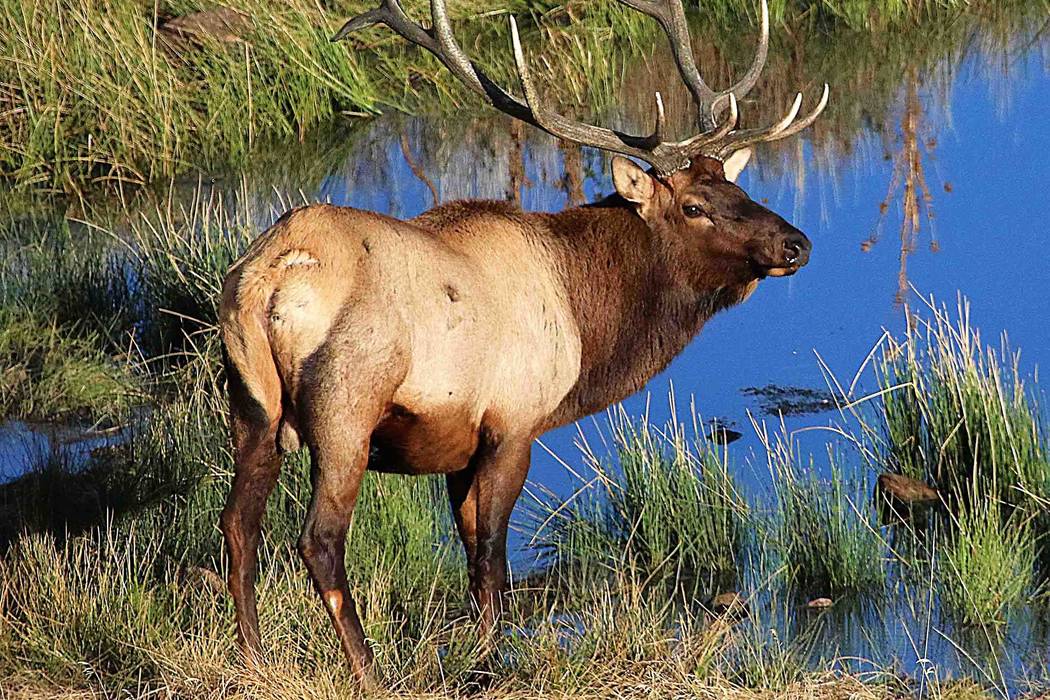Utah offers good option for big game hunting
With January nearing an end, it’s time to start thinking about your 2020 big game hunting options. One possibility is Utah, and Thursday is opening day for its version of the big game tag draw.
Utah offers multiple hunt opportunities that include two species of bighorn sheep, the desert and Rocky Mountain varieties — bison, elk, moose, mountain goat, mule deer and pronghorn.
The Utah Division of Wildlife Resources provides two options for submitting your application. You can apply online at utah-hunt.com or over the phone. The closest office to Las Vegas is in Cedar City (435-865-6100).
The application deadline for tags is 11 p.m. March 5. Or you have until March 19 if all you want is bonus or preference point. Regardless of whether you want a tag/permit or a bonus point, you will need a valid hunting or combination license to apply. Draw results should be available by May 29.
The southwestern corner of Utah long has been a popular deer hunting destination with Las Vegas residents, probably because of its proximity. But there is much more to the state than that small corner of real estate, and much of it is public land. Hunters also will find a wide variety of terrain and habitat types to choose from. Those options range from high desert to alpine forests.
If you have hunted in Utah, chances are you already have a favorite spot or at least one you are familiar with. But what if you are thinking about making a change or if the thought of hunting Utah is something new?
The best place to start is by doing research. An on-the-ground visit will give you a close look at the terrain and its features, but what if that isn’t possible between now and the application deadline? You can talk with hunters who have been there, but what if their preferences or physical abilities are different from yours?
Another option is the DWR’s online hunt planner. This tool allows you to search for information by hunt number, hunt name or species. If you search by species, you can narrow things down by using filters, which include animal gender, weapon class and the type of hunt you want. Type of hunt refers to designations such as general season, limited entry or statewide.
I completed a test search for an archery mule deer hunt in the Book Cliffs, a remote unit located on the Utah-Colorado state line. That search provided a list of hunt opportunities available in that unit. When I clicked on the designated hunt number, up popped a detailed information sheet that includes a description of the hunt and season dates. Beyond that were detailed population and harvest statistics, draw odds and information about the unit.
For example, the Book Cliffs unit has 34.6 bucks per 100 does and an estimated population of 5,500 deer. That’s much lower than the DWR objective of 15,000 deer. So there is room to grow. Nevertheless, the success rate during the 2019 season was almost 76 percent.
According to the report, “Most hunters are able to locate 20 to 40 bucks a day. The Book Cliffs has one of the highest success rates for archery hunters in the state.” Sounds good, right? But you will want to read on before submitting your application.
What you probably won’t find in the Book Cliffs is that 30-inch mulie. The average antler configuration for harvested bucks is four-point buck that measures just 22 inches. You also will want to take notice that the terrain is described as steep and challenging.
The information sheet includes a list of access points and a collection of biologist notes such as a description of migration patterns and places where deer typically have been harvested. You also will find a link to sources for land ownership information. Whatever your hunting goals, this resource is worth a look.
Desert Bighorn Banquet
The 56th annual Fraternity of the Desert Bighorn Banquet is Feb. 22 at the South Point. Tickets and sponsorship packages can be purchased at DesertBighorn.com.
Freelance writer Doug Nielsen is a conservation educator for the Nevada Department of Wildlife. His “In the Outdoors” column, published Thursday in the Las Vegas Review-Journal, is not affiliated with or endorsed by the department. Any opinions are his own. Find him on Facebook at @dougwritesoutdoors. He can be reached at intheoutdoorslv@gmail.com.

















